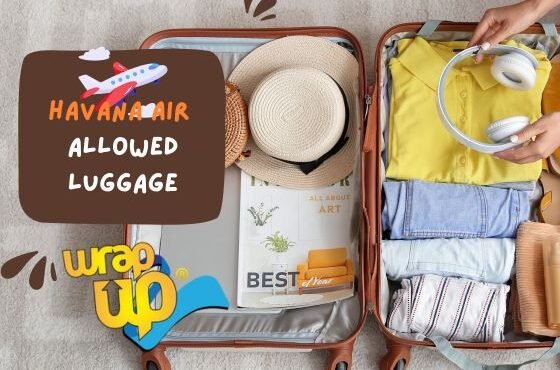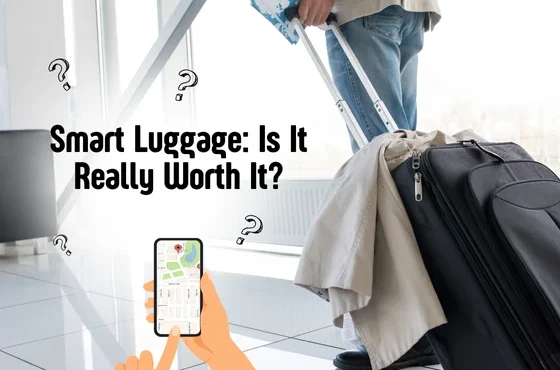Havana Air Allowed Luggage: Everything You Need to Know
Traveling with Havana Air can be an exciting experience, especially if it’s your first time flying with them. Whether you’re planning to visit family in Cuba or simply explore the island, it’s crucial to understand Havana Air’s allowed luggage policies to avoid surprises at the airport.
In this article, we’ll break down everything you need to know about Havana Air’s baggage allowance, based on personal experiences and the most up-to-date information.
What Is Havana Air’s Baggage Policy?
Before flying, it’s essential to understand Havana Air’s baggage regulations. The airline allows each passenger to check one suitcase of up to 23 kg (50 lbs). Additionally, you can bring one piece of carry-on luggage, which must meet certain size and weight restrictions, generally around 8 kg (17 lbs).
I remember preparing for my trip to Havana last year. It was my first time flying with them, and I was excited but also concerned about exceeding the baggage limits. Since I wanted to bring gifts for my family in Cuba, I researched Havana Air’s policies and made sure to comply with the regulations.
If you’re worried about exceeding the weight limits or need to transport delicate items, I recommend using WrapToGo’s luggage wrapping and weighing services. Our company specializes in ensuring your luggage is properly packed and within airline regulations. This way, you can avoid airport issues and ensure that everything arrives in perfect condition. You can find more details about our services here.
How Many Suitcases Can You Bring on a Charter Flight to Cuba?
On charter flights operated by Havana Air between Miami and Havana, the baggage policy allows one checked suitcase, but you can add extra luggage for an additional fee. In addition to checked baggage, you are also allowed to bring one carry-on bag.
During my trip, I made sure to organize everything in my suitcase to stay within the 23 kg (50 lbs) limit. When I arrived at the airport counter, feeling a bit nervous, I was greeted by a very friendly staff. The agent noticed my concern and, with a smile, helped me weigh my luggage. It was a relief to know I was within the limit, but even more so to see that they were willing to help me reorganize my baggage if needed.
To avoid this anxiety, WrapToGo offers at-home luggage weighing services, ensuring that you’re ready to board without worries. It’s a great option if you want to avoid overweight fees and make sure you comply with Havana Air’s baggage policies.
How Many Pounds of Luggage Can You Take to Cuba?
The allowed baggage weight on Havana Air flights to Cuba varies depending on the type of luggage. Checked baggage has a limit of 50 lbs (23 kg), while carry-on luggage is usually limited to 17 lbs (8 kg). It’s important to check the exact regulations with the airline before your flight, as they may change depending on the season or flight type.
When organizing my luggage, I spent a lot of time making sure I didn’t exceed the weight limit. I knew I wanted to bring several gifts for my family, but I also understood that I needed to follow the airline’s strict regulations. Fortunately, with the help of the Havana Air team, I was able to fit everything perfectly.
To ensure you don’t exceed the weight limit, consider using WrapToGo’s luggage weighing services before heading to the airport. This allows you to have complete control and peace of mind, knowing that your luggage is within the permitted limits.
What Can You Bring in Your Carry-On Luggage to Cuba?
Carry-on luggage is a crucial part of any flight, and Havana Air is no exception. In your carry-on bag, you can bring essential personal items such as clothing, electronic devices, and medications. However, there are restrictions on liquids and sharp objects, just like on most international flights.
It’s essential to check the specific regulations for carry-on luggage to avoid any issues during boarding. My carry-on included some important belongings, and I made sure it met the allowed dimensions to prevent any problems at the airport.
Don’t risk traveling with poorly organized or damaged luggage—contact us at WRAPTOGO.

Useful Tips for Traveling with Havana Air
If you’re planning a trip with Havana Air, here are some tips based on my experience:
- Organize your luggage in advance: Make sure to check the airline’s policies before packing.
- Be mindful of weight and dimensions: Use a scale at home to avoid surprises at the airport.
- Ask for help if needed: If you have any questions, Havana Air’s staff is friendly and always willing to assist.
Remember, if you need additional assistance, WrapToGo is here to help with packing, weighing, and protecting your luggage.
You may be interested in: Smart Luggage: Is It Really Worth It?




















Recent Comments